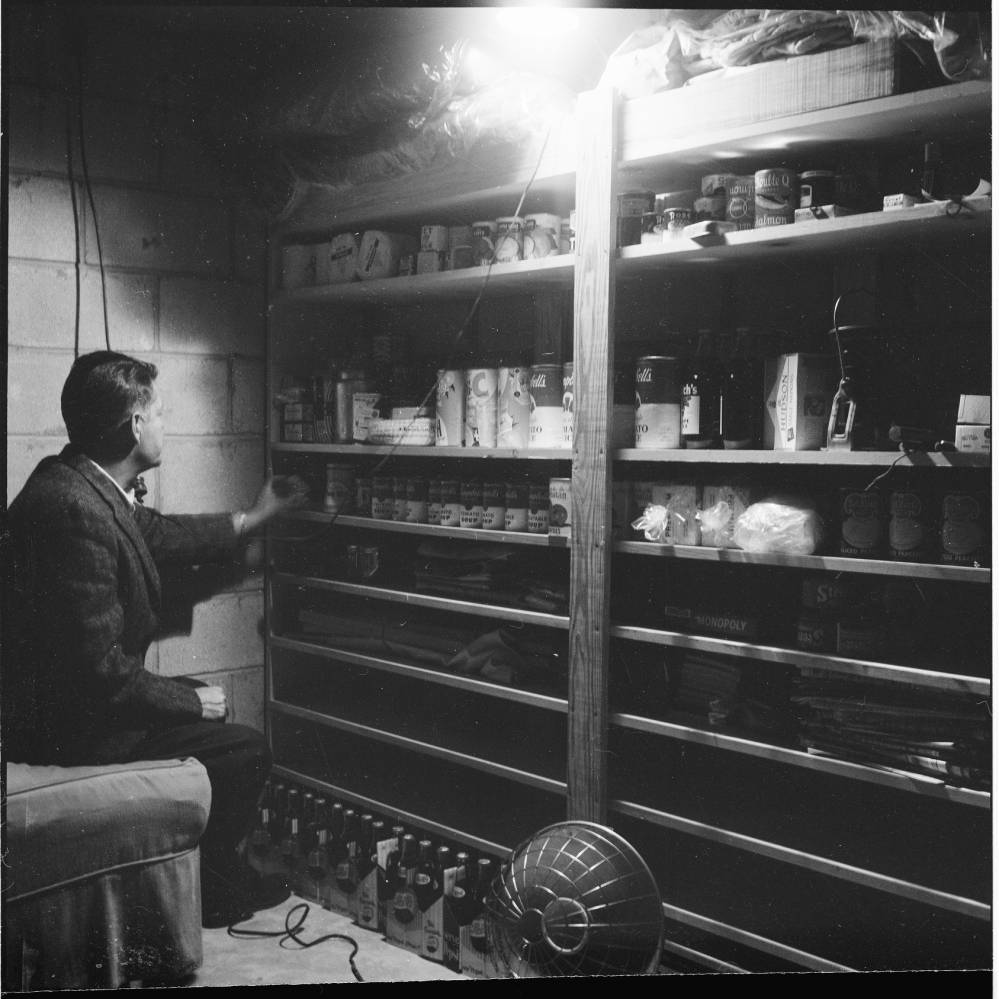The Cold War in the United States was a time characterized by societal fears of the practical possibility of nuclear war with the Soviet Union. This socially produced phenomenon led to the construction of personal fallout shelters in communities across the country, including in Chapel Hill. While the purpose of these shelters was ostensibly to protect against loss of life in the event of nuclear war, they also became sites of gendered food consumption and procurement practices. Understanding these gendered dynamics and the progression of factors that led to the viability of such shelters can offer a glimpse into the important role processed and canned foods played in midcentury America.
During the Eisenhower and Kennedy Administrations, several government-authored booklets containing free fallout shelter designs and recommendations were produced and distributed to the public. These booklets emphasized the “do-it-yourself” nature of fallout shelter construction, and depicted gendered work practices based on privileging the role of the nuclear family in American life. Men’s work was depicted as physically intense labor, while women were tasked with stocking food and creating aesthetically palatable spaces within shelters.[1]
This gendering of food practices within fallout shelters was predicated on the widespread availability of canned and processed foods. Canned and processed foods had longer shelf lives than traditional foods. This shift in the American food production landscape was accelerated by the wartime economy’s need for logistically simplified ways to package and transport food for the military to far corners of the world.[2] Fallout shelter cuisine was perhaps best exemplified with “Multi-Purpose Food,” described in a 1961 edition of The Science News-Letter as “food made from soy beans, a survival ration cracker and bulgur wheat. A vitamin C tablet as a food supplement and an iodine tablet to purify water.”[3]
The fallout shelter is just one example of the many ways processed foods were used as a tool to gender work and life for many midcentury Americans. In this way, one of their primary unintended consequences was to defend the structure of the nuclear family as much as they sought to defended against nuclear attacks.
[1] Lichtman, Sarah A. “Do-It-Yourself Security: Safety, Gender, and the Home Fallout Shelter in Cold War America.” Journal of Design History 19, no. 1 (2006): 39-55. http://www.jstor.org/stable/3838672.
[2] Backer, Kellen. “Constructing Borderless Foods: The Quartermaster Corps and World War II Army Subsistence.” Food Across Borders. New Brunswick: Rutgers University Press, 2017.
[3] “Survival Food Samples Available in New Kit.” The Science News-Letter 80, no. 17 (1961): 275. http://www.jstor.org/stable/3943516.
Photo source: Sheet Film 1175: Fallout Shelters, 27 November 1961: Scan 3, in the Roland Giduz Photographic Collection P0033, North Carolina Collection Photographic Archives, The Wilson Library, University of North Carolina at Chapel Hill.
By Adam Hasan
